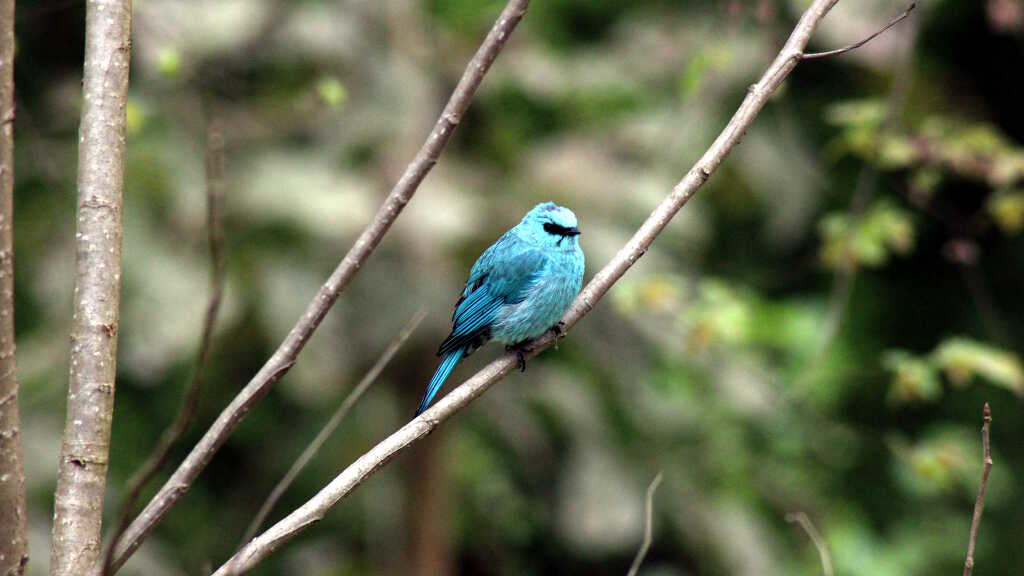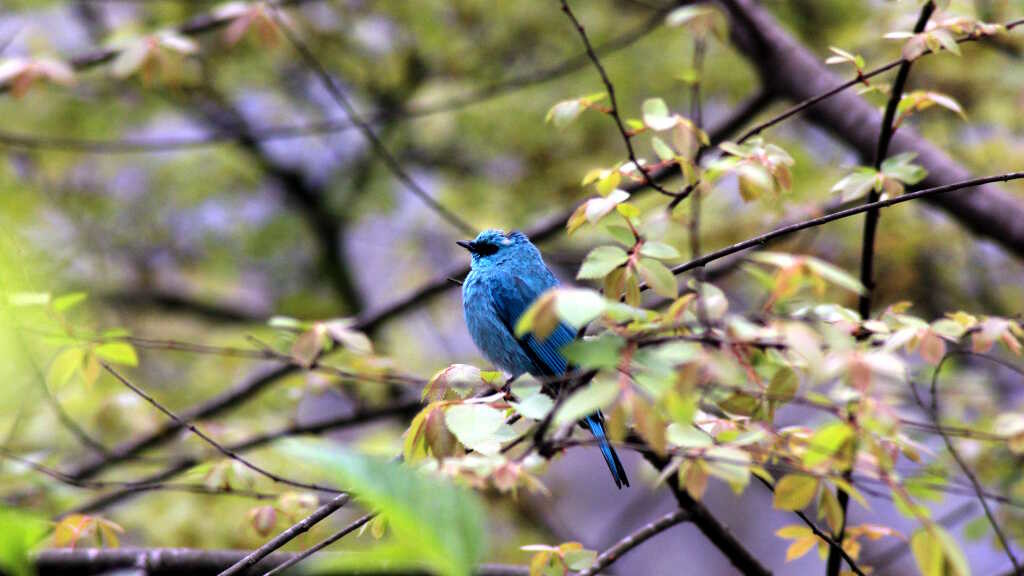
Great Barbet (Megalaima virens)
The Great Barbet (Megalaima virens) is the largest and most colorful barbet species found in the Great Himalayan National Park (GHNP). With its vibrant plumage, loud calls, and preference for mid- to high-elevation forests, this bird is a visual and auditory delight for birdwatchers exploring the protected wilderness of GHNP.
Habitat and Distribution in GHNP
The Great Barbet is typically found between 1,500 and 2,800 meters in elevation, thriving in dense temperate and subtropical forests. In GHNP, it is often observed in Tirthan and Sainj valleys, where fruiting trees are abundant. This species plays a critical ecological role in seed dispersal, thanks to its diet of figs and other soft fruits.
Physical Description and Behavior
This large, stocky bird is known for its green body, blue head, and yellow beak, making it easily identifiable. The Great Barbet has a deep, resonant call—“ka-ka-ka”—which echoes through the forest canopy, especially at dawn and dusk. Despite its size and vibrant coloration, it can be surprisingly elusive, remaining high in the canopy.
Feeding and Breeding
Primarily frugivorous, the Great Barbet also consumes insects, especially during the breeding season. It nests in tree cavities, often excavated by the birds themselves in rotting wood. The nesting season in GHNP usually spans from March to June, with both parents sharing feeding duties.
Conservation and Observation
Classified as Least Concern, the Great Barbet benefits greatly from the intact ecosystems of GHNP. Its continued presence indicates a healthy forest environment.
| Common name | Great Barbet |
| Scientific name | Megalaima virens |
| Family | Megalaimidae (Barbets) |
| Description | A brightly colored barbet with a heavy yellow bill, with bristles at its base–maroon-brown with violet blue-black head; olive-brown, blue, and yellow below with a bright scarlet patch under the tail. The sexes are alike. It is a common resident species of the moist forests of Himalayas, from 1000 to 3000 meters—found lower down in winter. The Great Barbet is a very common bird in Shimla area and usually likes to sit on the top of Deodar trees and gives a call from the top. Seen singly or in small feeding parties. Congregations of 30 or more are found in large fruiting trees. Though with gaudy coloration, it is difficult to view amongst foliage, especially in winter, when it is silent—feeds chiefly on fruits and insects. It has a distinct sound repeated monotonously, throughout the day, in irregular choruses by several birds, which intensifies at sunset |




